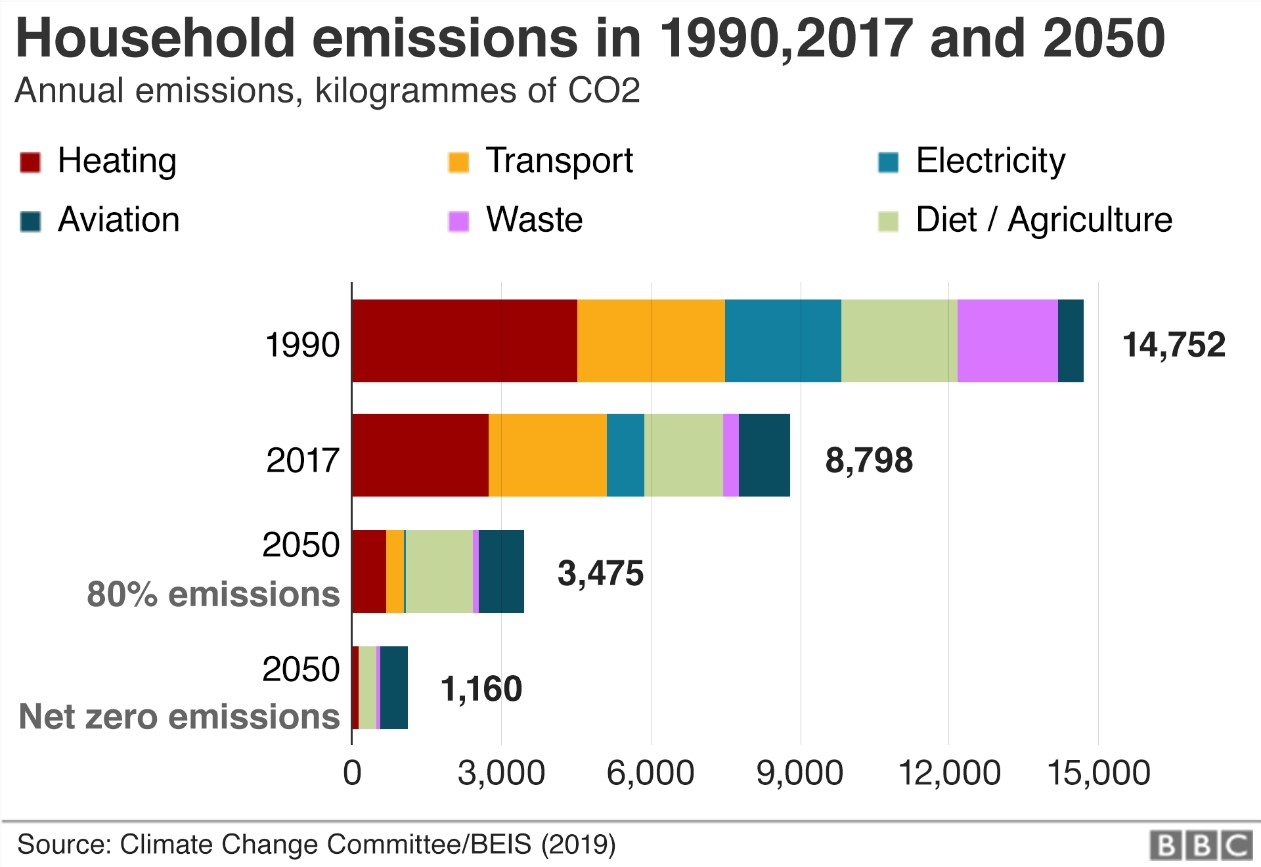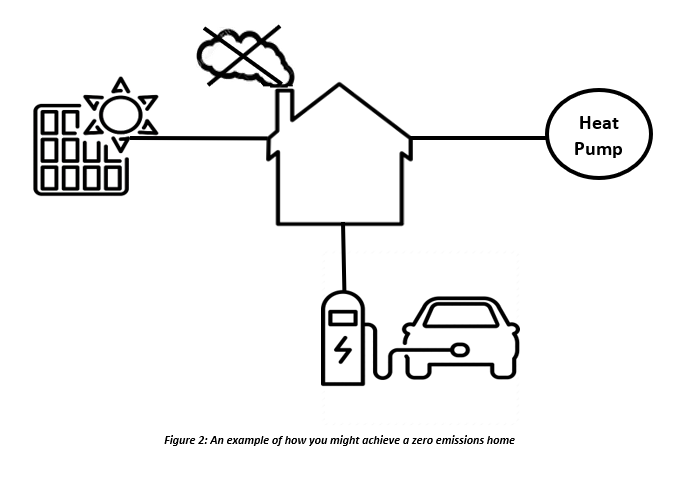The announcement comes as BEIS release figures showing heating remains the largest source of carbon emissions from a household. (See Figure 1) Therefore, to meet the proposed net zero emissions target this is where the most reduction must occur.

Figure 1: Required reductions in household emissions by sector
A household in the UK of size 600 m2 has an annual heating load of around 30 kW which translates to an energy usage of 75,000 kWh/year. Assuming this heating demand is met utilising Oil as a fuel source, 20,000 kg CO2 is produced every year per home at a cost of £4,500 to the consumer.
In the past, if a house was off the mains gas grid, heating oil was one of few, fossil fuel-based options available to heat the house. With the rise in heat pump installations, this is no longer the case. A heat pump utilises the heat energy in the ground, water or air around your home which with the help of a small amount of electricity can then provide heat and hot water to your home.
As heat pumps only utilise a small amount of electricity as a fuel (around 1/3 of the total energy required), running costs are minimized and the use of renewable energy from the natural surroundings of your property means that to heat and provide hot water to the same 600 m2 household with the same 75,000 kWh usage, a 30 kW ground source heat pump (with an efficiency factor of 4:1) would produce just 5,300 kgCO2 of greenhouse gas emissions and cost £2,250/year to run (based on an electricity price of 12p/kWh). This is a reduction of 14,700 kgCO2 (74%) and an estimated 50% saving in heating system running costs.
Emissions can be further reduced by pairing a heat pump with either a ground or roof mounted solar photovoltaic panel installation. A 10 kW solar PV system combined with a 30 kW heat pump could reduce non-renewable electricity consumption of the heat pump by around 15% and therefore reduce emissions by a further 800 kg CO2. Electricity from the PV system can also reduce non-renewable electricity usage of the property or be utilised to charge an electric vehicle as shown in Figure 2: An example of how you might achieve a zero emissions home.

With the UK now facing a proposed reduction of around 95% of greenhouse gas emissions over the next 30 years in the domestic heating sector alone, it is now the time to explore renewable technologies to support this transition to a sustainable future. To achieve this vision the government may soon have to mandate such technologies in law. Currently, there are subsidies in place to support the uptake of heat pumps financially. If you would like to discuss how you can reduce the carbon emissions of your home whilst also reducing running costs, contact Isoenergy today.






